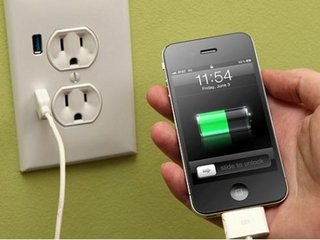

As smartphones are getting cooler and more amazing features that are draining your battery faster than you can finish that video of a dog looking confused, Apple is looking for ways to minimize battery usage. Last week, Apple filed a patent on a processor that will manage devices’ power usage more efficiently. And now it looks like Apple has gone a step further and actually acquired a company that specializes in low-power wireless chips.
Apple has recently acquired Passif Semiconductor for an undisclosed sum, according to unnamed sources that spoke with former Wall Street Journal reporter Jessica Lessin.
Apple reportedly attempted to buy Passif several years ago for a price in the “mid-tens-of-millions of dollars.” The company was founded by UC Berkley PhD students Ben Cook and Alex Berny to develop communication chips that use little power. Its technology includes a radio that works with Bluetooth Low Energy.
The technology could be promising for the much anticipated iWatch. Bluetooth Low Energy (BLE), also known as Bluetooth Smart, is particularly useful for health and fitness monitors, which typically require longer lasting batteries than other devices (because it defeats the purpose if you have to stop monitoring for a couple of hours to recharge your battery).
BLE is also useful for proximity sensing and “electronic leash” apps that require longer batteries. Apple filed a patent Thursday morning on a system that would store your preferred car and home configurations on your device. For example, information stored on your iPhone could communicate with your car when you get in to automatically adjust your seat, steering wheel, mirror positioning, and more.
Last week, Apple filed a patent on a processor that would learn your charging habits and adjust your device’s power management accordingly to save battery life. The processor will be designed to learn your charging habits, such as when you typically charge your device and where. You can also input your charging info. Using that information, the processor will estimate how much battery life you need at a given period and will adjust your device’s power management scheme to extend battery life. That might mean decreasing display brightness, reducing data fetching rate (such as for email), turning off certain applications or preventing those apps from running, and so on.
Image source: mactrast.com
















